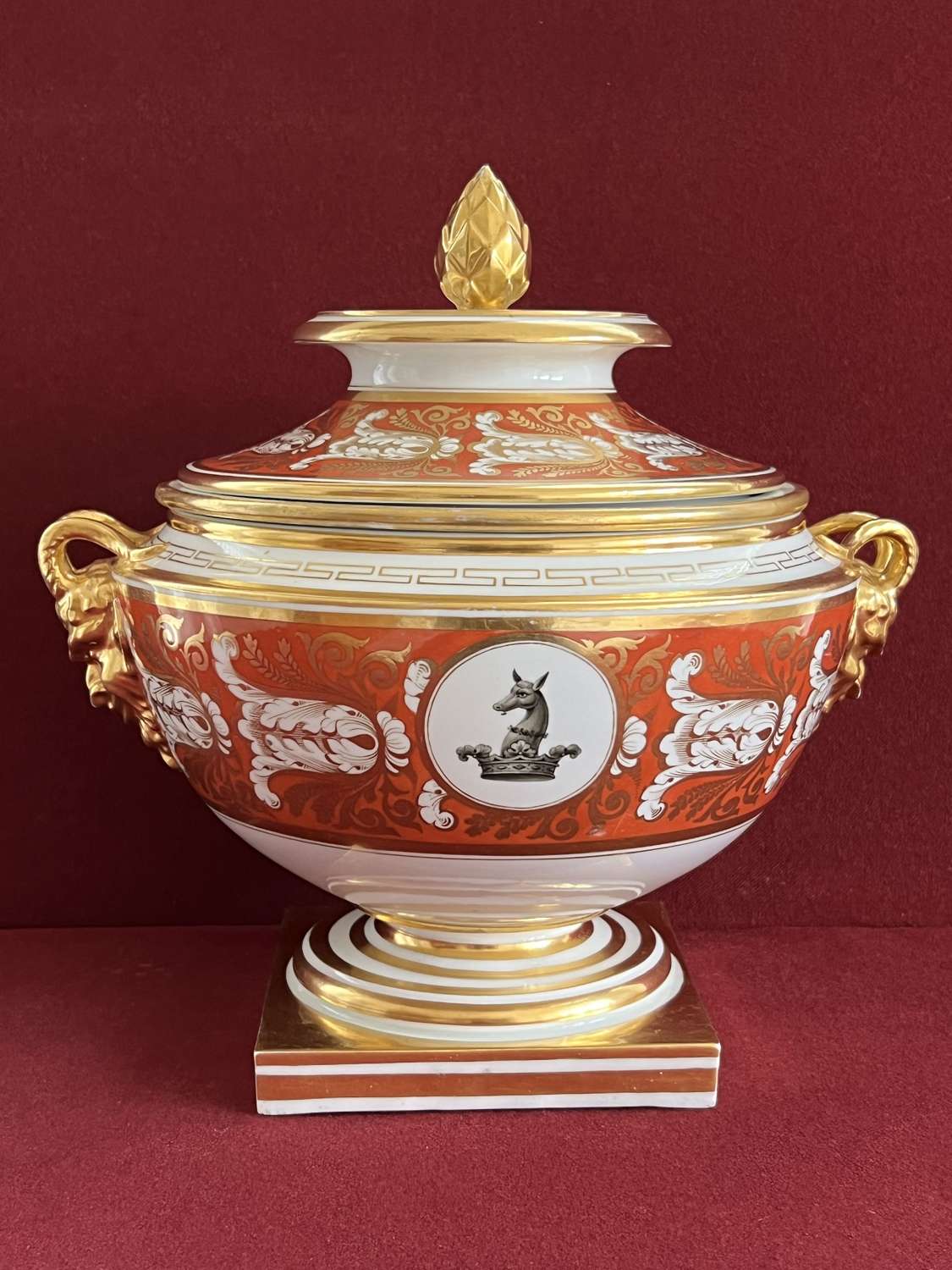







A Barr, Flight & Barr Worcester Porcelain Armorial Fruit Cooler c.1810
Code: 10954
Dimensions:
A magnificent and rare Barr, Flight & Barr Porcelain Fruit Cooler c.1804-1813. Superbly decorated with a continuous deep orange ground band and heavily gilded, highly detailed rams head handles, greek key motif to header and a crowned deer armorial crest to the front and reverse. The fruit cooler is one of the rarest and most coveted tableware pieces amongst antique porcelain. This example is even more valuable with its original liner and lid. Impressed mark to underside.
The first record of ice cream in Britain is 1671 on the menu of a feast for the Knights of the Garter held in St. George's Hall at Windsor Castle. At this time it was considered such an exclusive dish that it appeared only on the king's table.
The earliest printed recipe appeared in Mrs Eale's Receipts, a work on confectionary which was published in London, 1718.
It was not until the second half of the 18th century that ices became more readily available from confectioner's shops, and these pails were commonly found on upper class homes' sideboards to be used for a dessert of ice cream with cut fruit.
If ice alone is used to fill the cover and the bucket, the ice cream melts very quickly. Although there is nothing recorded in literature, it is almost certain that a little salt was sprinkled on the ice.
Porcelain is the ideal material for ice cream pails as it is impervious to salt which improves the refrigerant effect. Experiments has shown that ice cream will remain in a frozen state for up to four hours in these ice pails if salt is added to both containers.
After a time, a small amount of ice eventually forms on the exterior of the pail - usually causing condensation, and possible adhesion to the table cloth.
It is therefore likely that these early pails would have been placed on a plate or stand. Later designs of these pails often had feet to prevent them freezing to the table, and these objects were rarely made beyond the year 1830.
Condition: Excellent with just some minor wear and a repair to the inner liner
